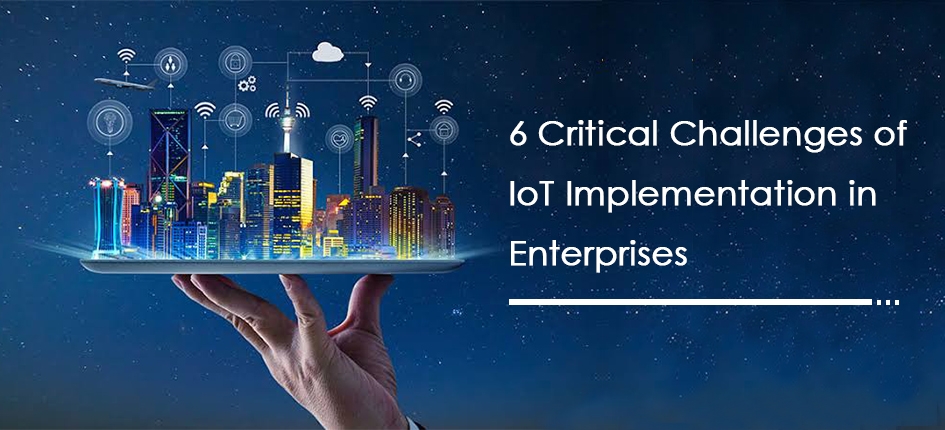6 Critical Challenges of IoT Implementation in Enterprises

Internet of Things (IoT) is relatively a new concept for businesses, which is unearthing massive opportunities for them to thrive in today’s era. Various experts have various takes on what IoT stands for enterprises. However, the underlying notion behind IoT always remains the same – collect data, analyze it, and generate profound insights to expedite operations and yield benefits. It seems easy in theory, but IoT deployment is way challenging than said. We had to pour our blood, sweat, and tears to successfully deliver our first IoT project as an effective IoT implementation needs a lot of brainstorming, diligence, intelligence, and determination.
The following are a few challenges that we encountered during our IoT development and deployment journey.
Delivering Value to the Clients/Customers
The success of an IoT implementation is directly proportional to defining the problem statement clearly, and this is what most IoT development services providers miss out. The IoT development cycle requires a great deal of retrospection, but this gap of understanding the client’s problem statement is the biggest obstacle. Thus, IoT developers and consultants need to know what IoT can really bring to the table and figure out the KPIs to monitor and improve through an IoT solution.
Hardware Compatibility Issues
Data gathering majorly takes place through various sensors, PLCs, etc. which are further connected to IoT gateways to store and transfer data to the cloud. Enterprises must meticulously identify their machines, hardware, and legacy systems based on their business objectives. When there are legacy systems that don’t have integrated sensors and PLCs, the IoT implementation becomes a bit challenging. Incorporating external sensors is one quick workaround, but it won’t be foolproof, making this challenge more critical. Thus, understanding the machines and their compatibility issues before IoT implementation is highly recommended.
Data Connectivity Issues
This is probably the most overlooked issue since data connectivity has improved a lot. But still, there are some areas where data connectivity is a huge challenge in an IoT implementation. It involves how IoT devices work with the gateway and the cloud and what data format do they create. Most IoT gateways are compatible with Wi-Fi/LAN and GPRS, but legacy systems depend on RTUs, PLCs, and telemetry systems to generate data. So, a suitable edge layer is needed to translate transport and data format protocols and send data to the IoT-integrated platform. Defining and understanding the perfect combination of these protocols before IoT implementation will be beneficial in the long run.
Inaccurate Data Collection
Suppose the entire IoT implementation did not encounter any hurdles, and the system is running seamlessly. But due to an unexpected incident or the software inability to handle certain anomalies in run time, inaccurate data gets collected. This further results in inaccurate analytics that may not help in gauging the operations and making better futuristic decisions. As we said earlier that IoT is all about data collection, the inability to garner accurate data can be a significant challenge for the IoT developers as well as their clients.
Analytics Storage Space
The real potential of an IoT system is realized through profound, actionable insights obtained from the garnered data. This demands a high-performance analytics platform that can handle an enormous amount of data to be stored in the solution at a later point. Experts must take this aspect into account while devising the architecture of IoT implementation to engage data processing, cleansing, and representation. Hence, the system should be extensible enough to store real-time or predictive analytics so that the system never go out of space.
Data Security Issues
Due to ransomware attacks, businesses are concerned about data security. There are also possibilities of corporate espionage to gain intellectual property. Thus, IoT development services providers must ensure data protection by using a comprehensive governance model, which renders secure access to sensitive data and reports. This planning phase, which defines various data-related security policies, is essential for successful IoT implementation.
Conclusion
The abovementioned challenges are the key factors that influence the decision-making process of enterprises and potential clients for IoT implementation. A smart grid solutions provider successfully implemented an IoT solution by overcoming these challenges. The experts of our IoT development company helped them to devise and build a system that connects plenty of electric meters, handles and analyzes massive data and provides intelligent reports for making the best decisions.

